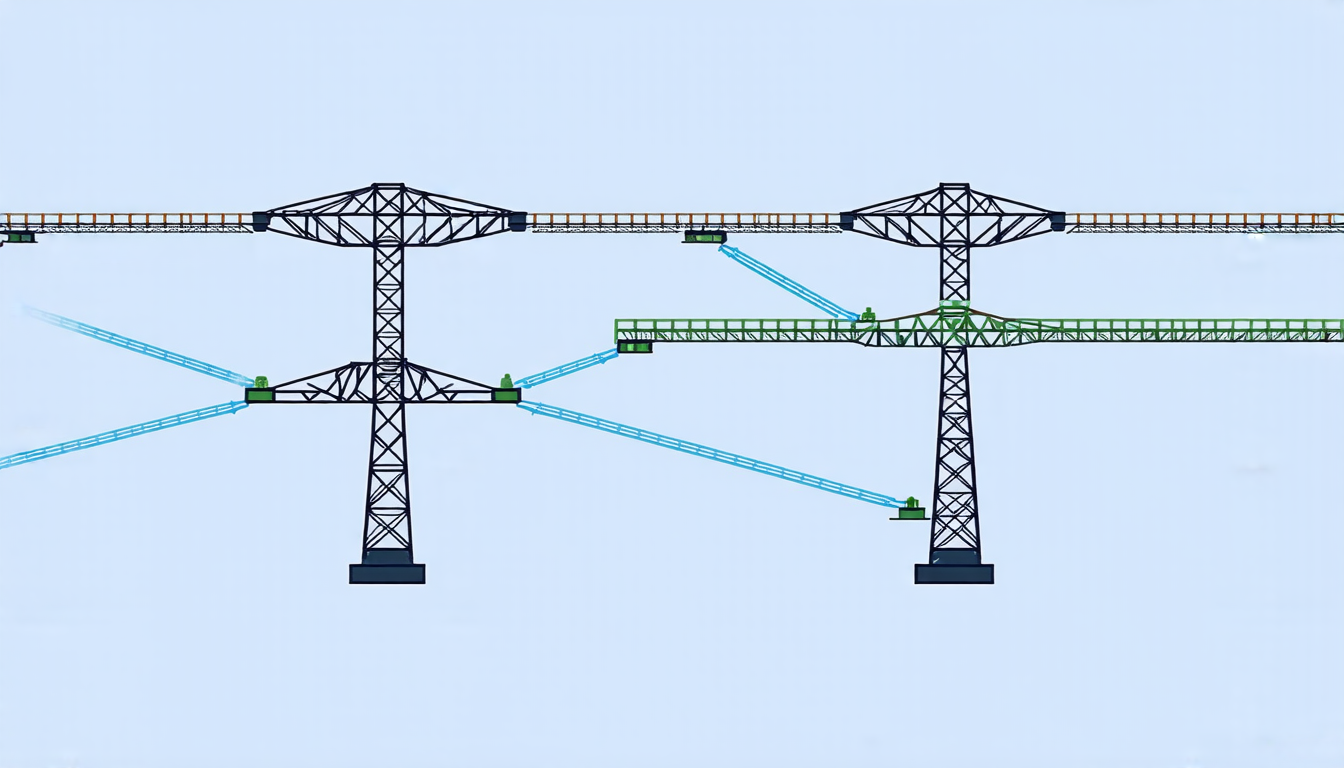Monday 07 April 2025
The quest for more resilient power grids has led researchers to explore innovative strategies, and a new study published in Physical Review Research sheds light on the benefits of community-based bridge duplication. The approach may seem counterintuitive at first, but it’s an effective way to boost grid stability and reduce the risk of cascading failures.
Power grids are complex networks that rely on intricate connections between nodes to distribute electricity efficiently. However, this interconnectedness also makes them vulnerable to disruptions. When a single link fails or is damaged, it can trigger a chain reaction of failures, leading to widespread power outages. To mitigate this risk, utilities and grid operators have traditionally focused on reinforcing critical infrastructure, such as transmission lines and substations.
The new study proposes an alternative approach: duplicating bridges between communities. Bridges are critical components that connect different parts of the grid, allowing electricity to flow seamlessly across regions. By creating redundant connections, researchers found that they can significantly improve grid resilience.
The team used two models of the Hungarian high-voltage network to test their hypothesis. The first model was built from official data provided by the transmission system operator, while the second was created using a combination of real-world data and simplifications. Both models were analyzed using different reinforcement strategies, including doubling transmission links, adding bypasses around weakly synchronized nodes, and reinforcing edges that trigger the largest cascade failures.
The results showed that community-based bridge duplication yields the most significant improvements across all parameters. This approach not only reduces the likelihood of cascading failures but also enhances overall grid stability. The study’s findings suggest that this strategy can be particularly effective in regions with high population density or critical infrastructure.
So, why does duplicating bridges work? In simple terms, it allows electricity to continue flowing even if a single link fails. When a bridge is duplicated, the redundant connection ensures that power can still be transmitted across the region, reducing the likelihood of a cascade failure. This approach also enables grid operators to respond more effectively to disruptions, as they have more options for rerouting power.
The study’s authors note that their findings have significant implications for grid planning and management. As the world continues to transition towards renewable energy sources, the need for resilient power grids will only grow more pressing. By adopting community-based bridge duplication, utilities and grid operators can improve the reliability of their infrastructure, reducing the risk of widespread outages and ensuring a stable supply of electricity.
Cite this article: “Unlocking Power Grid Resilience: A Quantitative Comparison of Reinforcements and Vulnerabilities”, The Science Archive, 2025.
Power Grids, Grid Resilience, Bridge Duplication, Cascading Failures, Transmission Lines, Substations, Grid Stability, Redundant Connections, Renewable Energy Sources, Grid Planning







